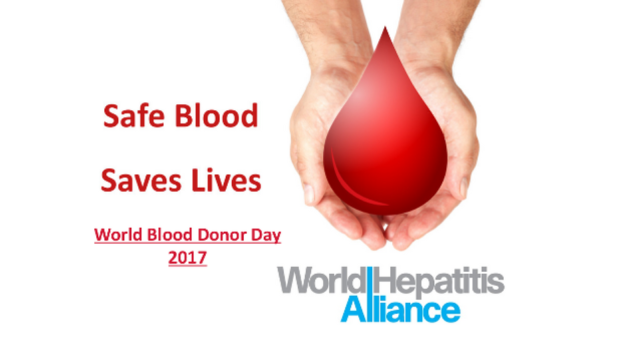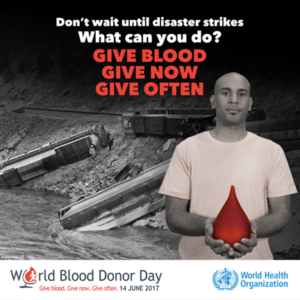
As the World Health Organisation (WHO) focuses on the power of giving blood, we draw your attention to the fact that, right now, in low-and-middle income countries, 1 in 3 donations are not screened, greatly increasing the risk of spreading infections, including viral hepatitis.
While acknowledging the critical role of blood donors to save lives, ensuring safety of national blood supplies is a must.
In both high- and low-income countries, the transfusion of unsafe blood in healthcare settings has been a driver for the high rates of viral hepatitis worldwide.
Viral hepatitis is a global epidemic accounting for more than one million deaths each year comparable to HIV/AIDS, malaria and tuberculosis. One of the main transmission routes for both hepatitis B and C is through contact with the blood or other body fluids of an infected person. In both high- and low-income countries, the transfusion of unsafe blood in healthcare settings has been a driver for the high rates of viral hepatitis worldwide.
The most recent data from WHO’s Global Database on Blood Safety as reported in the Global Status Report on Blood Safety and Availability indicates that there are nine countries that are not able to test 100% of the blood collected for hepatitis B, and 11 countries that are not able to test 100% of the blood collected for hepatitis C.
Screening blood donations is essential to protecting both recipients and donors. Yet, a lack of testing equipment and quality assurance remains a barrier to ensuring complete coverage. Without proper equipment, low-income countries will find themselves on the back foot when it comes to blood safety. To make matters worse, it is often individuals in low- and middle- income countries that are most in need of safe blood because the prevalence of transfusion-transmissible infections is higher.

The WHO Global Health Sector Strategy on viral hepatitis 2016-2021, adopted in May 2016, identified blood safety as a core intervention to eliminate viral hepatitis as a public health threat by 2030. That means that unless countries are able to ensure that 100% of their blood supplies are safe, these deadly viruses can continue to spread and cause harm.
Hence, governments need to take action now.
When countries invest in screening equipment and introduce quality assurance procedures, blood safety improves. In 2015, 97% of countries who reported data to the Global Database on Blood Safety reported that in their countries blood was screened using basic quality procedures. This was the result of national-level policy changes and securing testing equipment. When action is taken, blood can be made safe and lives can be saved.
It is a government’s duty to provide safe blood transfusions to its people so today, on World Blood Donor Day, we are calling on them to make it so
It is a government’s duty to provide safe blood transfusions to its people so today, on World Blood Donor Day, we are calling on them to make it so. Taking positive steps to find more blood donors and work towards self-sufficiency in blood and blood products makes absolute sense. But also, steps should be taken to ensure that the blood collected from these individuals is safe. After all, making blood safe will ensure all blood donations do what every donor intended: saves lives.
Let’s celebrate World Blood Donor Day 2017 by joining together and calling on governments around the world to make blood safe.
Hepatology, Medicine and Policy is now accepting submissions on this and related issues. For more information, visit: www.hmap.biomedcentral.com.
Comments